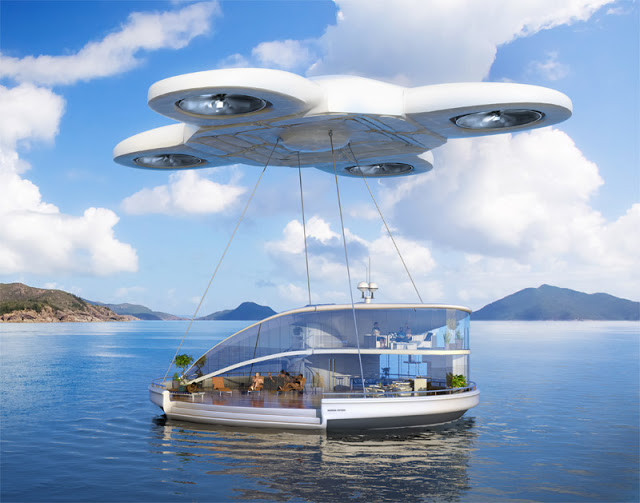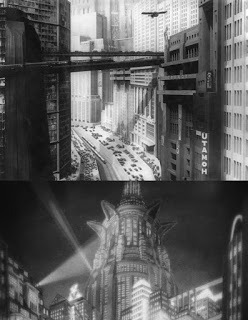Predicting the Future: Here’s What Our Homes May Be Like in 100 Years

Samsung SmartThings has released its “Future Living Report,” a forecast of the next 100 years. Among its many predictions are “smart homes,” undersea cities, “synthetic telepathy,” and 3D-printed gourmet meals.
TIME AND AGAIN
Forecasting the future has been one of humankind’s favorite pastimes. We’re usually pretty bad at it, but there’s always been a Cassandra or a Delphic oracle, a Sibyl or a Nostradamus willing to make the attempt.

But in more recent times, the art of predicting the future has almost become a kind of mathematics—very disciplined and scientific.
In the early decades of the last century, a number of scientific prophecies were made about what the future—our present—would be like; some of these were naively optimistic, a few were dead-on accurate, others hopelessly wide of the mark.
It’s always been fun to see how these old dreamers envisioned their future. For example, in Fritz Lang’s 1927 silent masterpiece Metropolis, the future was an immense urban jumble of Art Deco architecture, complete with multi-tiered highways and giant machines run by an oppressed working class. The famous science fiction pioneer H. G. Wells, in his 1933 novel The Shape of Things to Come, imagined that we would be living under something called the “Air Dictatorship”—a kind of technocratic world state ruled by air power.
Others focused more on the technological aspects of the future, and the many scientific wonders and gadgets to come. The old comic strip Buck Rogers in the 25th Century had some interesting things to say about this—predicting, among other things, text messaging, cell phones, surveillance drones, and even the Hyperloop, the pneumatic transport system proposed by Elon Musk.
And it is along these lines—though with a more official and academic imprimatur—that Samsung has released its “SmartThings Future Living Report.” It’s a serious look at the topography of the future, at least in terms of its technological promise, and what that will mean for our lives and how we live them. It’s an extrapolation of current technological trends, as all such predictions inevitably are; but it’s less extravagant than most, more restrained and rooted in scientific realities, and it has a convincing ring of truth to it.
Which is exciting, because if the folks at Samsung are right, it means that over the next century or so we’re going to be in for a very interesting ride.
Some of the future predictions found in the Buck Rogers comic strip. Top: drones; bottom: transportation via pneumatic tube.
SMART LIVING
According to the report, we can expect some pretty remarkable changes to our homes and our personal spaces, to say nothing of those ordinary, overlooked things that make up so much of our daily routine. As human populations soar, our cities and homes will have to adapt; interior living spaces will change as a cloud changes, easily reconfigured and rearranged to suit our fickle tastes, or accommodate different purposes.
Imagine walls and floors made of a malleable “skin,” and embedded with tiny sensors and actuators so that the shape and size of living spaces can quickly change, or even be divided into smaller rooms; imagine fully programmable “smart homes” that can be controlled remotely, and provide feedback to their owners—yes, there’ll even be an app for that.
Virtual decorations will alter with changing tastes, moods and whims; and the entire interior surface of the home will be implanted with LED technology—television screens and computer displays will form and unform in any room, as needed. Even our furniture will be adaptable, molding to custom fit our bodies, responding to changes in posture, or disappearing altogether when not needed.
It will be the ultimate evolution of the “Internet of Things.” Misplaced something? Can’t find your keys? No problem. Just use an online search function to find it. Hate the color of that accent wall? Delete it. Need more storage space? Watch new shelves appear, as if by magic.
And the amenities are fantastic. Every home will come standard with a 3D printer; they’ll be able to churn out just about anything you could wish, using downloadable patterns, probably including even complex electronic devices. They may even print out your meals, designed and programmed by the world’s master chefs.
Walk-in “medical pods,” meanwhile, will contribute to the decentralization of healthcare—their imaging sensors will diagnose your ills and, for the more easily treatable maladies, dispense drugs, inject antibiotics, and recommend health regimens. It may even be possible to undergo remote, robot-mediated surgery, in the comfort of your own home.
This barely scratches the surface. Imagine homes whose very building material is salted with dormant limestone-producing bacteria, which awaken upon contact with moisture and repair any cracks or structural damage.
There will be “digestion tanks” full of anaerobic bacteria, to dispose of our waste; and our homes will produce, store, and reuse their own energy, using “microbial fuel cell stacks” and more efficient solar panels to generate electricity, and power-banks like the Tesla powerwall to store it against future use. Personal homes will be almost fully independent of a dangerously overtaxed energy grid.
One hundred years in the future, our houses will be, in almost all respects, semi-living, artificial organisms—closed systems with a metabolism, sensory apparatus, immune response, and an approximation to a nervous system.
We’ll be living in homes that are practically alive. An uncanny thought.
Политика конфиденциальности | Правила пользования сайтом








